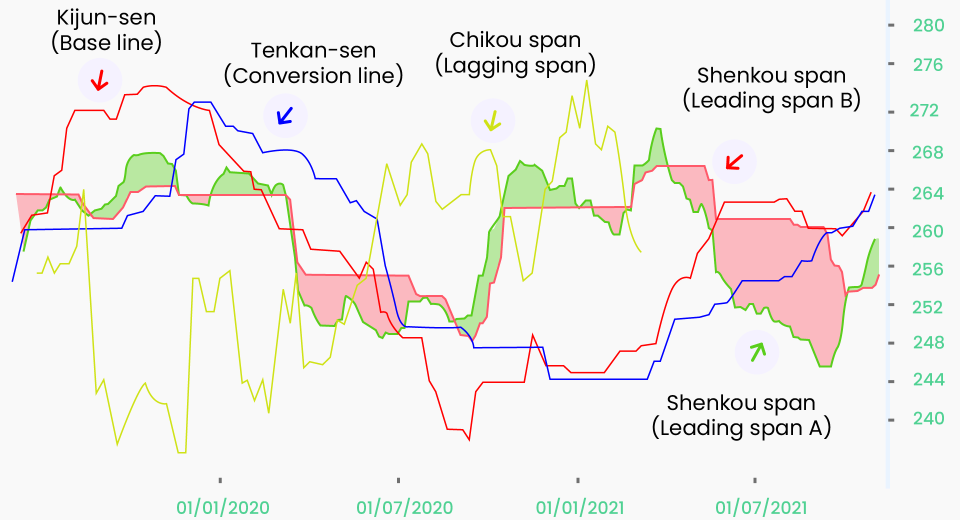Top Hedging Tips to Navigate Volatile Market Conditions

Galt and Taggart rightly predicted that 2023 would be a year of high volatility. This was mainly due to the continued monetary tightening in developed economies, clubbed with promising growth in the emerging markets, which created inflation divergences. The mid-year outlook by JP Morgan highlighted that the inflation psychology of both policymakers and investors was shifting and the market volatility index (VIX) would remain at around 25.
As inflation cools, increased trader activity will likely induce more volatility in the financial markets. This means stronger analysis and hedging of positions to navigate the uncertain market.
Why Do Professionals Favour Hedging?
Traders often suffer due to false alarms. They either trigger risk protection measures too early or delay them until losses have accumulated. Hedging empowers traders to exercise more control over their portfolios beyond risk management. This is because they actively take positions to mitigate risks associated with previously opened positions. A reduction in the potential for losses helps traders maintain a rational trading psyche. Traders also use hedging as protective insurance to diversify high-risk portfolios and avoid tax implications that may arise on closing positions.
Hedging Techniques
Traders need to align their hedging strategies as their trading strategy evolves and market conditions change.
Static Hedging
Beginners prefer to keep their hedged positions fixed, since they trade a limited set of assets, often involving similar market behaviour.
Dynamic Hedging
Experienced traders dynamically increase or reduce their hedge position sizes and even include or exclude assets to maintain a consistent and effective hedge ratio. Irrespective of the hedging technique, ensuring hedge efficacy is essential. Quantifying managed and unmanaged risk and the efficiency of hedging can help provide a clearer picture of expected portfolio performance.
Popular Hedging Strategies
The first step is to pick the most suitable instruments for hedging, based on your trading strategy.
Diversification
Modern Portfolio Theory (MPT) describes diversification as the most effective way to manage risks associated with volatility. The theory suggests that you statistically evaluate the expected returns for a defined amount of risk. It uses the correlation between assets to determine effective fund distribution and create a balanced portfolio.
Averaging Down
This is popular among stock traders. Traders purchase more shares of a stock that has recently declined and incurred losses. As the market corrects and the price rises, the gains offset the loss from their initial position.
Safe Havens
Some instruments are considered safe havens during market uncertainties.
- Gold has long been considered a store of value. Its stability earns it the status of a safe haven asset. It protects the portfolio against bear runs, heightened downside volatility and currency valuation changes.
- Some currencies, such as the US dollar, Swiss franc, Japanese yen and euro, significantly impact the global markets. Traders popularly use them to hedge against untoward market events that devalue currencies.
Pairs Trading
Traders identify assets that are negatively or poorly correlated. One of them is undervalued, and the other is overvalued. They hedge against price fluctuations relying on the market’s tendency to correct itself. They do this by opening long positions on undervalued assets and short ones on overvalued assets.
Using Derivatives
Derivative instruments allow traders to amplify potential gains. CFDs are a popularly traded instrument that do not require you to own the underlying asset. Traders speculate on price movements, and the settlement involves only the price difference between the contract’s opening and the date of closing.
A popular strategy is to open a large position toward the expected price movement. Simultaneously, a smaller position in the opposite direction works as a hedge. If the markets move in the opposite direction to the speculation, the losses in the larger position are offset by gains in the smaller one. However, remember to use leverage carefully because it also multiplies loss potential.
Digital Currencies
Cryptocurrencies have gained much attention due to their outsized returns. More recently, traders are increasingly making space for digital assets in their portfolios to hedge against the risks of trading the traditional financial markets.
Steps to Create a Hedging Plan
Step 1
Based on the assets in your portfolio, identify the risks you wish to hedge against, such as currency fluctuations or commodity price movements.
Step 2
Once the risk is identified, set your hedging objectives to limit risk exposure according to the size of the position and the degree of risk associated with it.
Step 3
Pick the most suitable hedging instruments and strategies while maintaining portfolio growth and limited losses.
Step 4
Learn to determine the hedge ratio to gauge the efficacy of your hedging plan.
Step 5
Implement and monitor the plan to retain portfolio growth as the markets move. Tweak the portfolio if required.
Top Hedging Tips
Experienced traders consider their risk appetite, risk tolerance and available capital while developing hedging strategies. A few things to keep in mind are:
- Hedging should ensure that your trading goals are met, and portfolio growth is secured.
- Before investing, thoroughly understand the instrument to gauge its impact on the portfolio effectively.
- Test your hedging strategy and trading plan on a demo account to ensure it works and gain confidence.
- Remain vigilant to avoid over- and under-hedging since this could nullify the entire hedging plan.
- Watch the VIX or Fear and Greed Index to stay abreast of changing volatility and the hedging needs of our portfolio.
The key to building an efficient hedging plan is identifying a comfortable level of risk exposure that ensures portfolio growth and peace of mind.
To Sum Up
- Hedging reduces portfolio risks associated with market volatility.
- Popular hedging strategies include diversification, investing in safe havens, cryptocurrencies, pair trading and derivatives trading.
- Traders strategically choose the right hedging instruments based on their portfolio and desired risk exposure.
- Beginners rely on static hedging, while experts are more inclined to use dynamic hedging.
- Avoid over- or under-hedging to yield the best results.
- The value and composition of the portfolio changes over time and so should the hedging strategy.
Disclaimer:
All data, information and materials are published and provided “as is” solely for informational purposes only, and is not intended nor should be considered, in any way, as investment advice, recommendations, and/or suggestions for performing any actions with financial instruments. The information and opinions presented do not take into account any particular individual’s investment objectives, financial situation or needs, and hence does not constitute as an advice or a recommendation with respect to any investment product. All investors should seek advice from certified financial advisors based on their unique situation before making any investment decisions in accordance to their personal risk appetite. Blackwell Global endeavours to ensure that the information provided is complete and correct, but make no representation as to the actuality, accuracy or completeness of the information. Information, data and opinions may change without notice and Blackwell Global is not obliged to update on the changes. The opinions and views expressed are solely those of the authors and analysts and do not necessarily represent that of Blackwell Global or its management, shareholders, and affiliates. Any projections or views of the market provided may not prove to be accurate. Past performance is not necessarily an indicative of future performance. Blackwell Global assumes no liability for any loss arising directly or indirectly from use of or reliance on such information herein contained. Reproduction of this information, in whole or in part, is not permitted.




